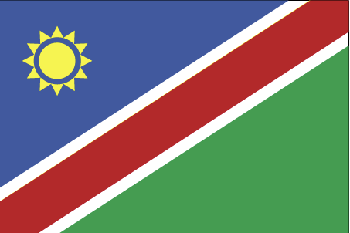
I arrived in Windhoek, the capital city around noon after an overnight bus ride that was about 24 hours in length. I quickly found a backpacker-style hotel and got cleaned up. My hotel featured a tour desk (like most hotels) and right away I booked a tour of Etosha National Park – 4 days and 3 nights. Then I spent the next few days losing my jet-lag and exploring the City of Windhoek.
The center of downtown was a short 15 minute walk away from my hotel. There is a large German influence in Namibia that even supported a daily German-language newspaper – surprising for a country of only 2 million people. The downtown area was very modern, with high-rise buildings and nice pedestrian shopping plazas.
In visiting the tourist office, I found there was a lot to do in this small, desert country. In the south, the Fish River canyon is the Africa equivelent of America's Grand Canyon. I bit further north is the Namib desert, and the Sossusvlei area features 300 meter high sand dunes - some of the highest in the world. The coast of the Atlantic Ocean is known as the Skeleton Coast for all the past shipwrecks. In the southeast, the Kalahari desert and national park spans the border with South Africa. In the north next to Anglola, there are native nomatic people who live in the desert and paint their nearly naked bodies as a natural type of sunscreen.
I walked through the downtown area and found the national congressional building. I was taking photos of the building when a lady approached me - she was a local reporter and told me that the legislature was now in session - come with her and watch the political happenings. It was very interesting to see the national congress debate, but photos were not allowed. The congress was considering a bill allowing women equal rights. It was very controversial and against traditional African roles.
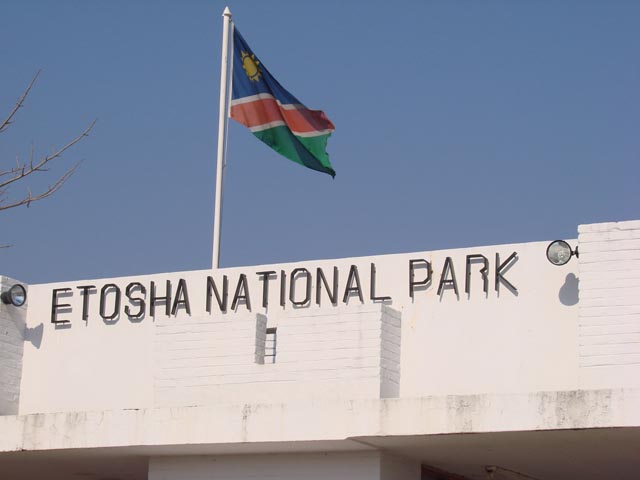 This
was the first safari of my life, so I was expecting a fun
experience, but I didn't really know what it was going to be like.
This
was the first safari of my life, so I was expecting a fun
experience, but I didn't really know what it was going to be like.The rules were fairly simple. Outside the campground, don't ever leave the tour vehicle, and don't extend your legs or arms outside the windows. No bathroom breaks except in designated fenced areas. No driving off-road.
My tour group was a large group of 12 people in a custom vehicle with a pop-top roof for viewing and photography. Most of the people were Europeans. Half were couples, and the other half were single travellers like me.
Etosha was about a four hour drive north of Windhoek along a paved road. We arrived at the south entrance, the Anderson Gate in the mid-afternoon. It was a very hot day with temperatures in the mid 80s. Since this was the dry season, the plan was to drive from water hole to water hole in search of wildlife. The animals have to visit the waterholes daily in order to survive. The predators know this too.


We stopped for our first camp in the designated campground. These were large fenced area where the wild animals couldn't enter. In each of the campgrounds, there are waterholes located right on the outside edges of the fenced campground, and they are illuminated by large "streetlights" all night long and feature a covered viewing shelter. If you were so inclined, you could watch animals all night long at the waterhole.
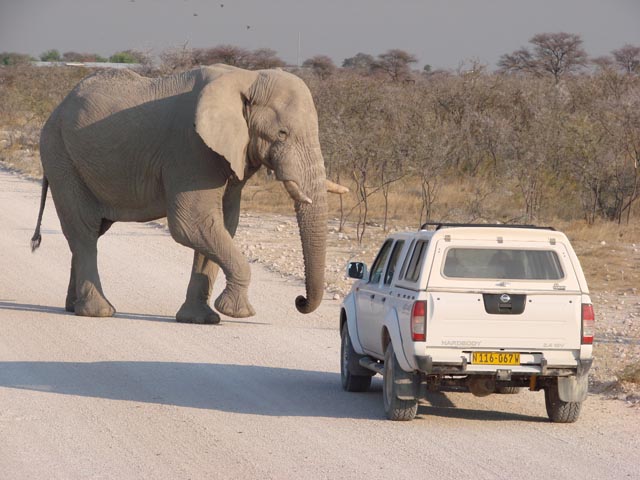
We stayed one night at each of the three official campsites. At the last campsite, Namutoni, I got some nice sunset photos with the elephants at the waterhole. That night, there were a group of lions roaring in the distance, and the sound was carried by the quiet windless night. I was very glad to have a fence surrounding our campsite and tents.

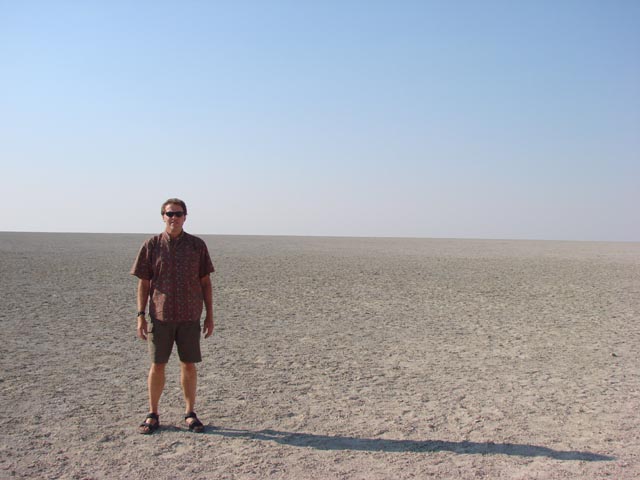
On the Etosha Pan
Swakopmond (map of location)
From back in Windhoek, I took the overnight train to the Namibia coast and visited the tourist city of Swakopmond. This is a little slice of Germany stuck in the middle of Africa. The city has German architecture, german-speaking residents and most of the street names are german. My hotel manager said that 80% of her hotel guests were from Germany. This was a small town, so it was easy to explore on foot. Where the city limits stopped, the Namibian desert began, and it was very desolate without any vegetation.
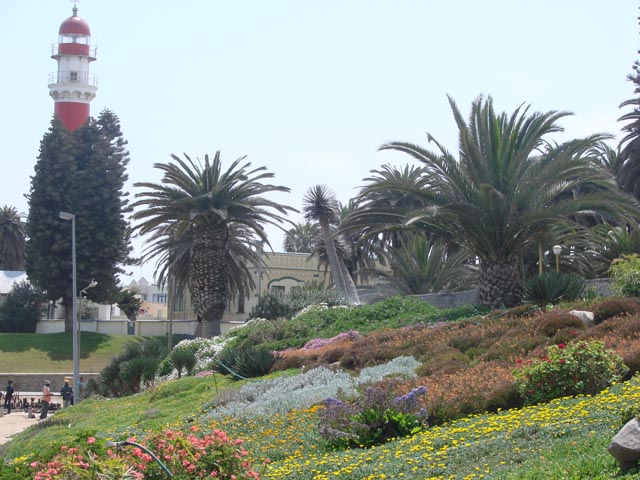
I stayed for two days, then took the night train back to Windhoek, where I spent the afternoon before boarding an evening & night express bus to Livingstone, Zambia.